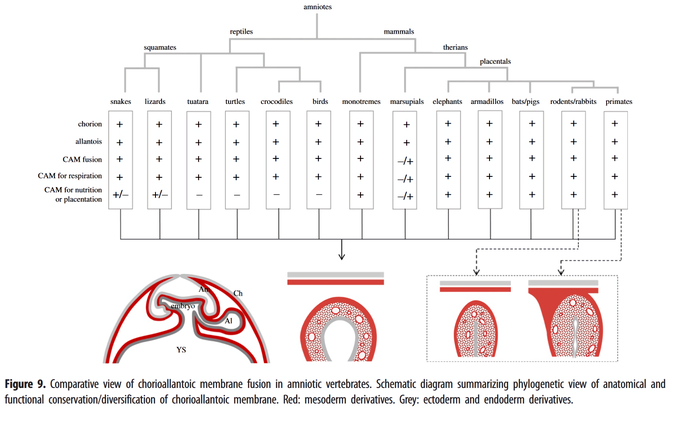- HOME
- News & Events
- Publications
- 【Publications】Mesothelial fusion mediates chorioallantoic membrane formation
Publications
【Publications】Mesothelial fusion mediates chorioallantoic membrane formation
October 18 2022
Lab: Sheng Guojun
Paper information
Title:
Mesothelial fusion mediates chorioallantoic membrane formation
Hiroki Nagai, Yuki Tanoue, Tomonori Nakamura, Christopher J. J. Chan, Shigehito Yamada, Mitinori Saitou,Takaichi Fukuda and Guojun Sheng
Philosophical Transactions of the Royal Society B doi: https://doi.org/10.1098/rstb.2021.0263
Abstract
In amniotic vertebrates (birds, reptiles and mammals), an extraembryonic structure called the chorioallantoic membrane (CAM) functions as respiratory organ for embryonic development. The CAM is derived from fusion between two pre-existing membranes, the allantois, a hindgut diverticulum and a reservoir for metabolic waste, and the chorion which marks the embryo's external boundary. Modified CAM in eutherian mammals, including humans, gives rise to chorioallantoic placenta. Despite its importance, little is known about cellular and molecular mechanisms mediating CAM formation and maturation. In this work, using the avian model, we focused on the early phase of CAM morphogenesis when the allantois and chorion meet and initiate fusion. We report here that chicken chorioallantoic fusion takes place when the allantois reaches the size of 2.5-3.0 mm in diameter and in about 6 hours between E3.75 and E4. Electron microscopy and immunofluorescence analyses suggested that before fusion, in both the allantois and chorion, an epithelial-shaped mesothelial layer is present, which dissolves after fusion, presumably by undergoing epithelial-mesenchymal transition. The fusion process per se, however, is independent of allantoic growth, circulation, or its connection to the developing mesonephros. Mesoderm cells derived from the allantois and chorion can intermingle post-fusion, and chorionic ectoderm cells exhibit a specialized sub-apical intercellular interface, possibly to facilitate infiltration of allantois-derived vascular progenitors into the chorionic ectoderm territory for optimal oxygen transport. Finally, we investigated chorioallantoic fusion-like process in primates, with limited numbers of archived human and fresh macaque samples. We summarize the similarities and differences of CAM formation among different amniote groups and propose that mesothelial epithelial-mesenchymal transition mediates chorioallantoic fusion in most amniotic vertebrates. Further study is needed to clarify tissue morphogenesis leading to chorioallantoic fusion in primates. Elucidating molecular mechanisms regulating mesothelial integrity and epithelial-mesenchymal transition will also help understand mesothelial diseases in the adult, including mesothelioma, ovarian cancer and fibrosis.
This article is part of the theme issue 'Extraembryonic tissues: exploring concepts, definitions and functions across the animal kingdom'.

